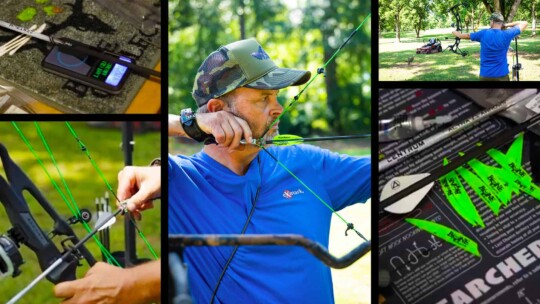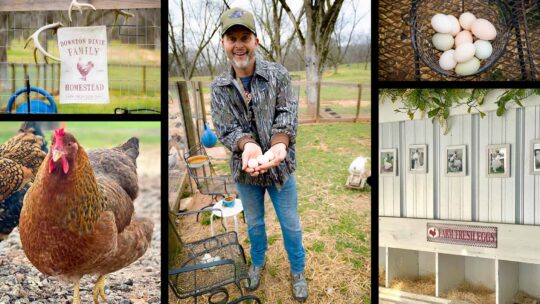For many hunters, there’s no better reward for a successful deer outing than the bounty of jerky, sausage, steaks, and chili meat that came from their harvest. While processing facilities are a viable option, Michael Waddell prefers doing his deer processing at home. In this video, he reveals just what’s inside his personal deer-processing kitchen.
To this seasoned hunter and Bone Collector star, providing food for his family—and, then the camaraderie found in preparing it—is what backyard life is all about.
Advantages of Deer Processing at Home
- Less wasted meat.
- More control over the kinds of cuts that can be created.
- Not all processors vacuum seal. (Some still use paper.)
Essential Tools for a Deer-Processing Kitchen
1. Deer Cleaning Station
Michael’s gambrel—a hanging metal device used to skin hides and fillet backstraps, tenderloins and neck meat—is kept outside his kitchen. (This part of the process—namely, not contaminating the meat—takes a bit of practice to get right, Michael admits.) After the field dress is complete, deboning and quartering can begin.
2. Game Processing Knives
In the field and the kitchen, a fixed skinning knife is essential—not to mention, preferable over a folding pocketknife. Though easier to carry, folding knives are harder to clean. Fixed knives don’t have hidden areas that meat and fat can become lodged in.
As for the ideal knife length, Micheal suggests a four-inch minimum blade. Namely, because some cuts of meat can be thick, and a shorter knife won’t get the job done as neatly. Also, don’t forget a good cutting board and knife sharpener.
3. Keep Your Options Open
Michael’s game-processing kitchen also has tools to give him a variety of final product options. These include a grinder, slicer, stuffer and sealer. To illustrate, he says you can cut steaks, grind meat for use in chili or to make burgers or slice it thin for jerky. A good meat lug, or plastic basin, is ideal for holding your cuts while deciding what you want to make with each.
4. The Importance of Added Fat to Deer Meat
Deer venison’s lean, so Michael recommends adding some type of beef fat, pork fat, or your favorite trimmings with it when grinding. Ground meat is a staple in many favorite recipes. For Michael, it’s chili, soup and burgers, and about 15 to 20 percent fat is ideal for each.
5. Using a Sealer
Michael also keeps a vacuum sealer in his kitchen. Once frozen, he says, vacuum-sealed deer meat will keep a lot longer than if it had’nt been.
Final Thoughts on Deer Processing at Home
To Michael, the camaraderie enjoyed when processing meat with friends and family is an extension of the organic, field-to-table experience he craves. Although utilizing a meat processor may be convenient, Michael offers a different perspective. “We’re the ones who are touching and handling the meat, and putting it in the freezer. It also gives us an opportunity to enjoy fellowship and storytelling.”
Sounds like great reasons to us, Michael!



